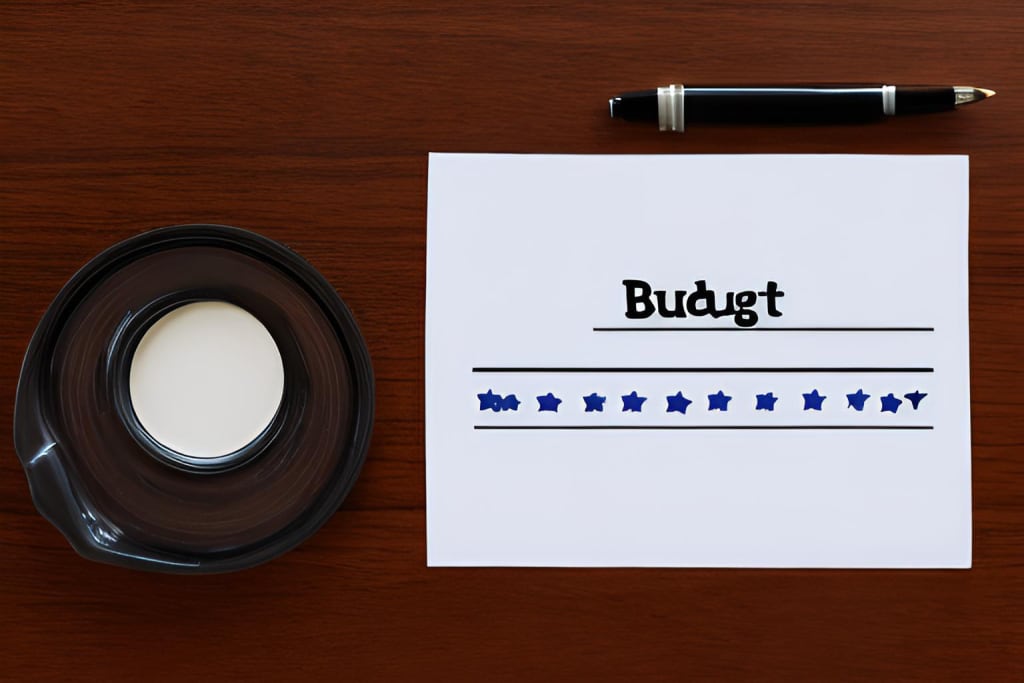
Budgeting is an essential aspect of personal finance that involves planning and managing an individual's income and expenses. Budgeting helps individuals understand their financial situation, avoid overspending and accruing debt, and reach their financial goals. In this journal, we will explore what budgeting is, the importance of budgeting, how one should do budgeting, and some recommended budgeting techniques.
What is Budgeting?
Budgeting is the process of creating a plan for spending and saving money. This involves tracking income and expenses, making adjustments to spending habits, and prioritizing expenses. A budget should be realistic, flexible, and reflect an individual's goals and priorities. Budgeting can be done using a variety of tools, such as a pen and paper, spreadsheet, or budgeting app.
The Importance of Budgeting
Budgeting is important for several reasons. Firstly, it helps individuals understand their financial situation and provides a clear picture of their income and expenses. This allows individuals to make informed decisions about spending and saving and avoid overspending and accruing debt. Secondly, budgeting helps individuals prioritize expenses, ensuring that their spending aligns with their goals and values. This can include saving for emergencies, preparing for retirement, and funding long-term goals. Finally, budgeting helps individuals identify areas where they can cut back on spending, providing more room for savings and investment.
How to do Budgeting
Budgeting is a simple process, but it requires discipline and effort. To create an effective budget, individuals should follow these steps:
Track Income: Start by tracking all sources of income, including salary, bonuses, and any other forms of income.
Track Expenses: Keep track of all expenses, including bills, groceries, entertainment, and any other spending.
Categorize Expenses: Group expenses into categories, such as housing, transportation, food, and entertainment.
Set a Spending Limit: Determine a spending limit for each category of expenses, based on income and financial goals.
Adjust Spending: If spending exceeds the set limit, adjust spending habits and prioritize expenses.
Review and Reassess: Review the budget regularly and make adjustments as needed. This can include adjusting spending limits or making changes to spending habits.
Here is a list of popular budgeting apps or software programs that can help with budgeting:
Mint: A free, all-in-one budgeting app that tracks spending, creates a budget, and provides financial insights and advice.
Personal Capital: A free financial management tool that provides a comprehensive view of a person's financial situation, including investments, spending, and retirement planning.
YNAB (You Need A Budget): A paid app that offers a comprehensive budgeting system, linking bank accounts to track spending and provide real-time updates on progress towards budget goals.
PocketGuard: A free app that tracks spending, creates a budget, and provides a simplified view of an individual's financial situation.
EveryDollar: A budgeting app that helps users create a budget, track spending, and reach financial goals.
Microsoft Excel: A spreadsheet program that allows users to create custom budget templates and track spending using various formulas and charts.
Quicken: A comprehensive personal finance software that allows users to manage their finances, including budgeting, tracking spending, and investment tracking.
These are just a few examples of budgeting apps and software that are available. Individuals should research and compare the features of each app to find the one that best suits their needs.
Recommended Budgeting Techniques
50/30/20 Rule: This budgeting technique involves allocating 50% of income to necessities, 30% to discretionary spending, and 20% to savings and debt repayment.
Envelope Budgeting: This technique involves dividing cash into envelopes for different categories of expenses, such as groceries, entertainment, and transportation.
Zero-Based Budgeting: This technique involves subtracting all expenses from income, so that the budget is balanced and there is no money left over.
Reverse Budgeting: This technique involves starting with savings and investments and working backwards to allocate the remaining income to expenses.
Debt Snowball Method: This technique involves prioritizing the payment of debt, starting with the smallest debt first, and paying off debts one by one, creating momentum.
In conclusion, budgeting is an essential aspect of personal finance that involves tracking income and expenses, setting spending limits, and adjusting spending habits to reach financial goals. By using effective budgeting techniques, such as the 50/30/20 rule, envelope budgeting, zero-based budgeting, reverse budgeting, or the debt snowball method, individuals can take control of their finances and achieve financial stability. Budgeting requires discipline and effort, but it can provide peace of mind and financial security, and help individuals reach their financial goals.
About the Creator
Enjoyed the story? Support the Creator.
Subscribe for free to receive all their stories in your feed. You could also pledge your support or give them a one-off tip, letting them know you appreciate their work.





Comments
Lightez is not accepting comments at the moment
Want to show your support? Send them a one-off tip.